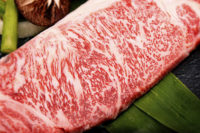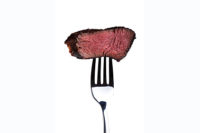AMSA Meat Science Review
Meat Science Review: Beyond tenderness, beef eaters crave exceptional flavor

 The beef market has constantly been under the pressure of evolving consumer preferences for taste, consistency and health, to name a few.
The beef market has constantly been under the pressure of evolving consumer preferences for taste, consistency and health, to name a few.
Tenderness is well-documented as the most important factor affecting beef palatability. Yet some believe flavor is equally as important as — or perhaps more important than — tenderness in determining overall liking in beef steaks.
Nationwide beef-consumer research at Texas Tech dating back to 2005 has shown flavor has a 58% greater impact on consumer satisfaction than tenderness (Felderhoff, 2007). When steaks have similar tenderness — much like what we’re seeing in today’s retail meat case (based on results from most recent National Beef Tenderness survey) — consumers rate overall acceptability higher when steaks have more marbling.
Therefore, the goal of current consumer research at TTU is to determine the effects of fat level on palatability and overall liking of beef strip loin steaks that would be considered tender based on Warner-Bratzler shear force (< 8.6 lb).
The main objective was accomplished by serving consumers (n = 120) strip steak samples aged 28 d postmortem of various chemical fat levels from USDA Standard (fat 2.0%), USDA Select (3.3%), Low Choice (5.6%), Upper 2/3 (Top) Choice (9.0%), and USDA Prime (14.7%), and Wagyu (18.8%). Besides examining various chemical fat levels of strip steaks, this study sought to flesh out any potential differences in palatability due to biological type in cattle in response to foodservice concerns with flavor of dairy type subprimals. Dairy beef strip loins were procured from a commercial beef portioning facility to represent two distinct chemical fat levels for Select and Top Choice beef.
Much like recent results from O’Quinn et al. (2012), flavor was the most highly correlated palatability trait with overall liking according to beef consumers (r = 0.91). Tenderness, juiciness, flavor liking and overall liking increased with increasing fat content (P < 0.05); however, there were a few exceptions.
Consumers rated Low Choice samples more tender than Top Choice, but similar overall due to increased flavor and juiciness. Based on results, it also appeared that consumers did not find any additional value in Wagyu strip steaks compared to USDA Prime, as they rated them similarly for tenderness, flavor and overall liking. Furthermore, consumers were unable to detect the differences in the palatability traits or overall liking between strip loin steaks sourced from beef and dairy beef.
As beef tenderness concerns diminish in today’s retail meat case, consumers rely more heavily on flavor to determine the outcome of their eating experience. Everything from finishing system to postmortem handling can impact the perceived flavor of beef, but fortunately biological type (i.e. beef vs. dairy beef) contributes little to this variation as seen by these results.
By understanding the relationship between fat level and consumer satisfaction, the industry can apply this knowledge to make changes during processing but still consistently deliver flavorful beef to the consumer.
For more information, contact Mark Miller and Andrea Garmyn, Texas Tech University Meat Science, at MFMRRAIDER@aol.com and andrea.garmyn@ttu.edu.
Looking for a reprint of this article?
From high-res PDFs to custom plaques, order your copy today!








